|
|||
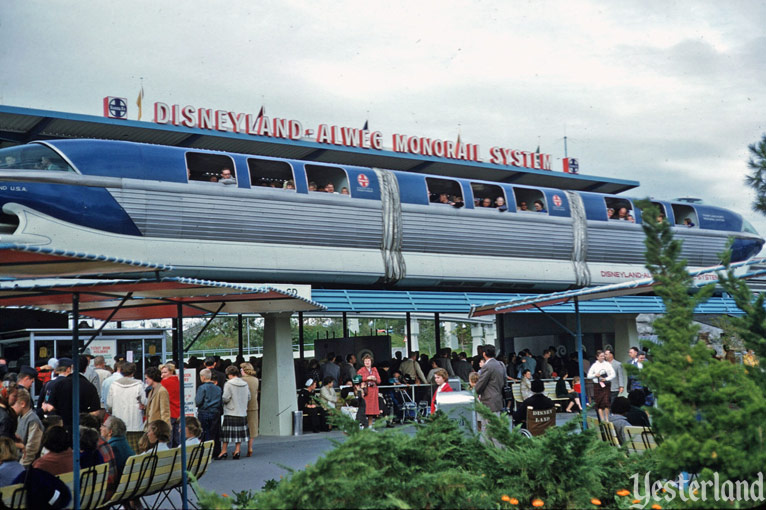
Photo by Charles R. Lympany, circa 1959, courtesy of Chris Taylor Mark I Monorail Blue at the Tomorrowland Station—the only station on the loop |
|||
|
You’ve just boarded a sleek Yesterland-Alweg Monorail for a nonstop, round-trip journey. |
|||
|
|
|||
|
Now you’re gliding along the gently curving “Highway in the Sky.” As you look out the windows, you enjoy scenic views of Tomorrowland and Fantasyland. |
|||
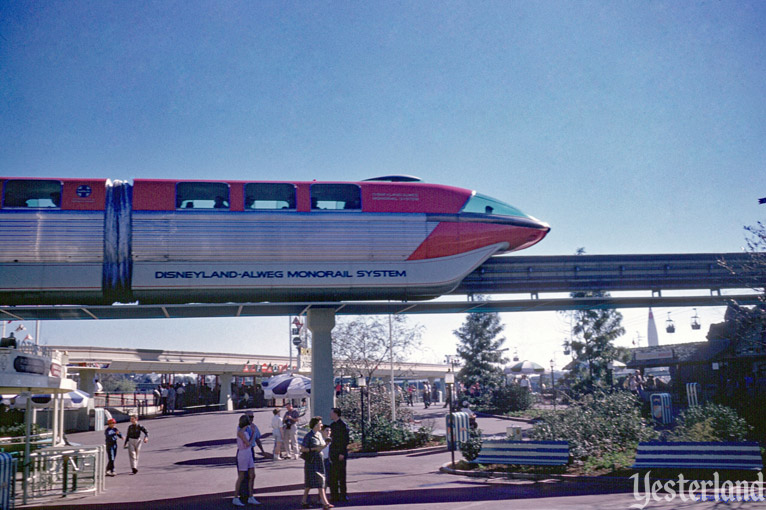
Photo by Charles R. Lympany, courtesy of Chris Taylor Blue lettering on Monorail Red; red lettering on Monorail Blue |
|||
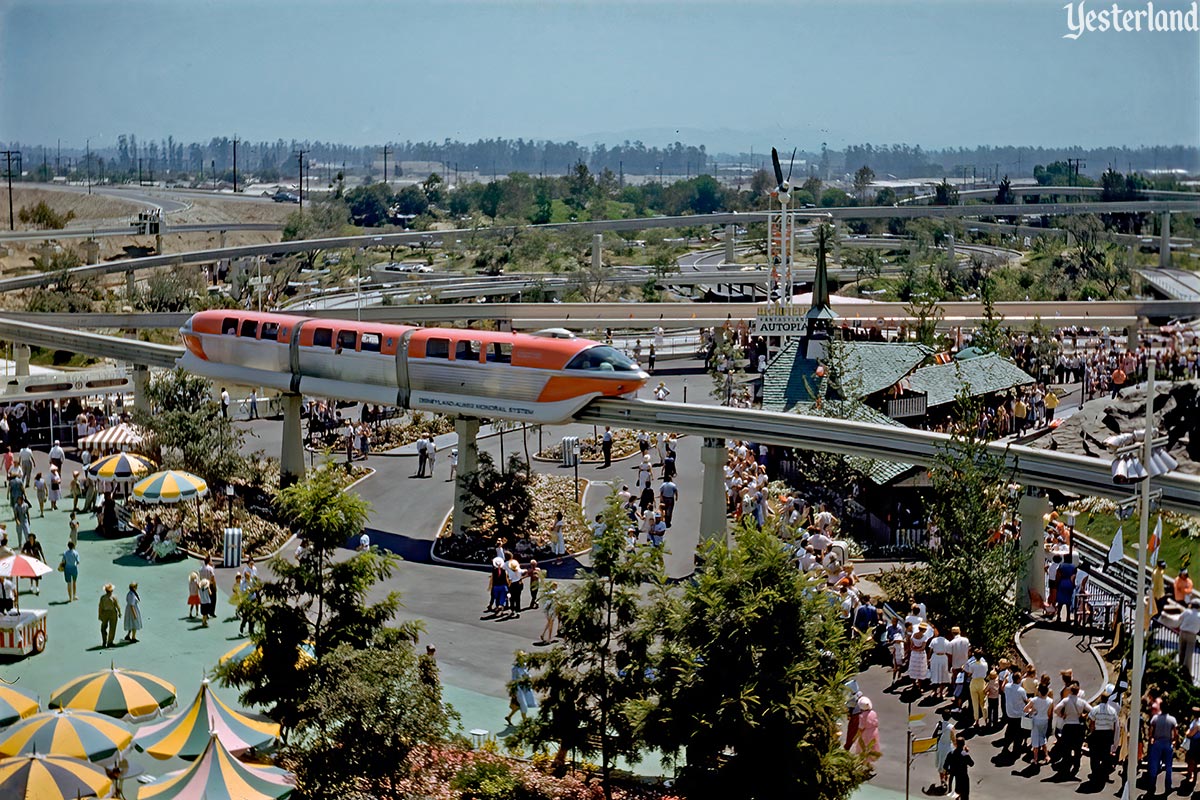
Photo by Fred M. Nelson, Sr., 1959, courtesy Bill Nelson Mark I Monorail Red passing over the queue for the brand new Matterhorn Bobsleds ride |
|||
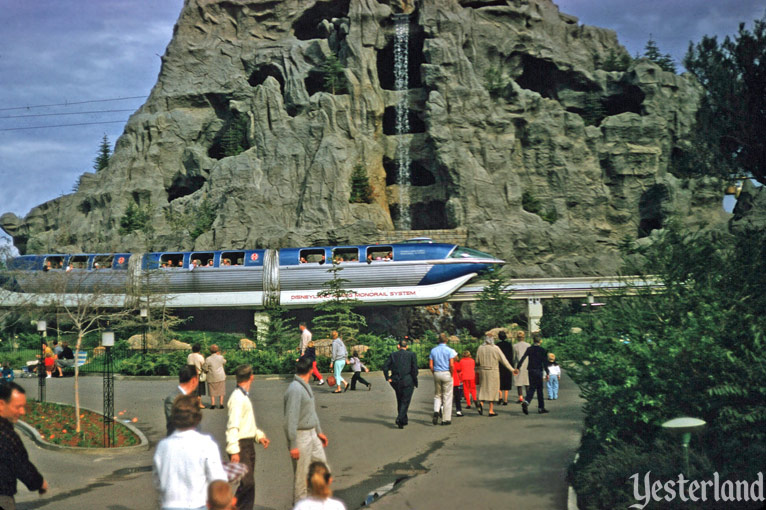
Photo by Charles R. Lympany, circa 1959, courtesy of Chris Taylor Heads turning for the Mark I Monorail Blue passing mighty Matterhorn Mountain |
|||
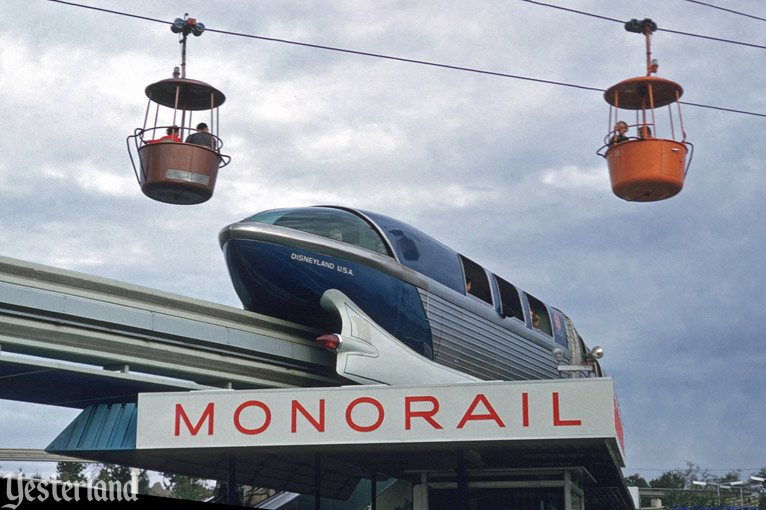
Photo by Charles R. Lympany, circa 1959, courtesy of Chris Taylor Tail fins with lights on the back of the train, in tradition of Cadillac, but upside-down |
|||
|
As you travel along the curves of the graceful beam, including a loop around the Matterhorn, you’ll have a fine view of park attractions such as the Midget Autopia. The elevated beam is higher than the berm that surrounds the park, so your view includes the orange groves and vegetable fields that surround it. Your brief, 8/10-mile journey is over as your Monorail returns to the station. |
|||
|
|
|||
|
The Disneyland-Alweg Monorail System was dedicated on June 14, 1959, with a ribbon-cutting ceremony that included U.S. Vice President Richard M. Nixon and his family. The Monorail was part of a major expansion of Tomorrowland which also included the Submarine Voyage, the Matterhorn Bobsleds, and the Motorboat Cruise. But what in the world is an Alweg? Alweg, or ALWEG, was a company in Cologne (Köln), Germany, founded by wealthy Swedish entrepreneur Dr. Axel Lennart Wenner-Gren. The ALWEG company developed a working monorail prototype, which caught Walt Disney’s eye in 1957. Disney worked out a deal with ALWEG, in which his designers would develop a monorail using ALWEG’s basic design as the starting point. |
|||
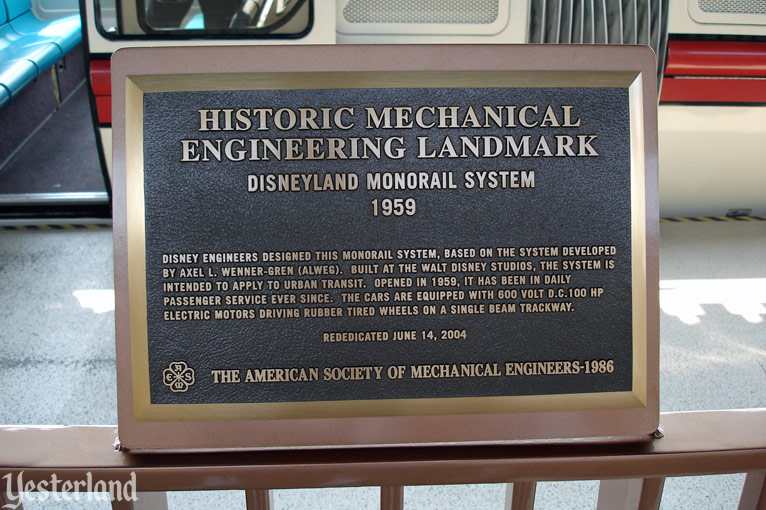
Photo by Allen Huffman, 2005 ASME plaque at the Tomorrowland Station in 2005 |
|||
|
Disney’s young design genius, Bob Gurr, designed a sleek train with a rocketship nose, corrugated side panels, and the famous bubble top in front. The Disneyland-Alweg Monorail’s appearance was a complete departure from the plain, functional design of ALWEG’s prototype (or ALWEG’s later Seattle Monorail, built for the 1962 Seattle “Century 21” World’s Fair). By early July 1959, there were two Mark I trains—one was red, the other blue—serving Disneyland guests. When Walt Disney decided to add the Monorail ride to Disneyland, he wasn’t just looking for a new way to entertain Disneyland guests. The Disneyland-Alweg Monorail would demonstrate a revolutionary solution to urban mass transportation. Quiet electric trains would glide above the avenues and rooftops of American cities on slender concrete rails in the sky. In June 1961, the Monorail became a true transportation link instead of just a sightseeing ride. |
|||
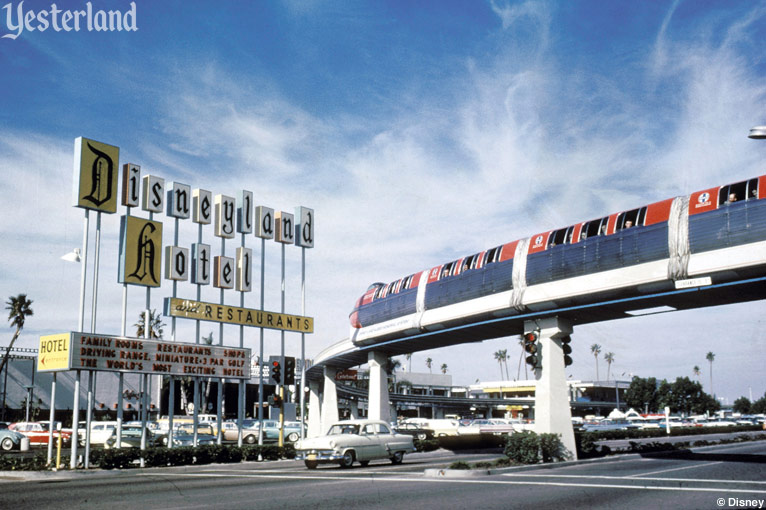
Historical photo from 1961 © The Walt Disney Company Monorail service across West Street to the Disneyland Hotel |
|||
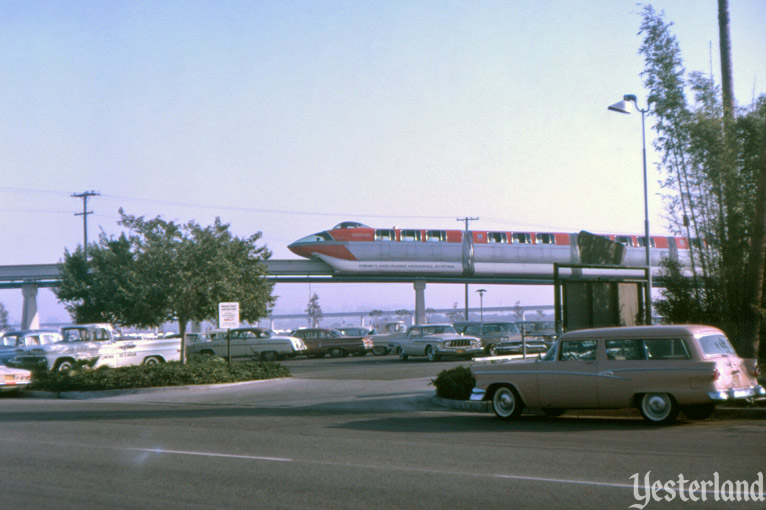
Photo by Charles R. Lympany, circa 1961, courtesy of Chris Taylor Return trip from the Disneyland Hotel back to Tomorrowland |
|||
|
With an extended 2½ mile track, Disneyland Hotel guests could board the Monorail at the hotel and begin their park visit in Tomorrowland. And Disneyland Park guests could exit at the Disneyland Hotel for the Monorail Lounge for beverages that weren’t available in the park. |
|||
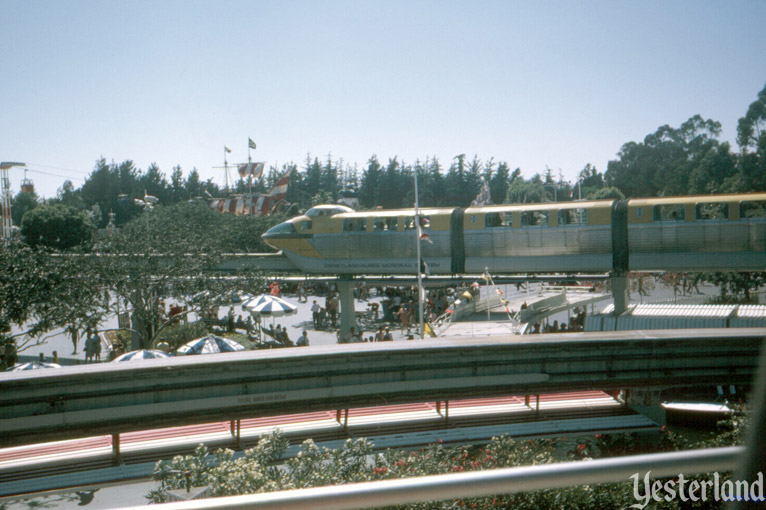
Photo by Charles R. Lympany, circa 1961, courtesy of Chris Taylor Mark II Monorail Yellow |
|||
|
Not only was the track extended, but trains grew from three cars to four cars, becoming Mark II trains in the process. The fleet grew to three trains with the addition of a yellow Monorail. |
|||
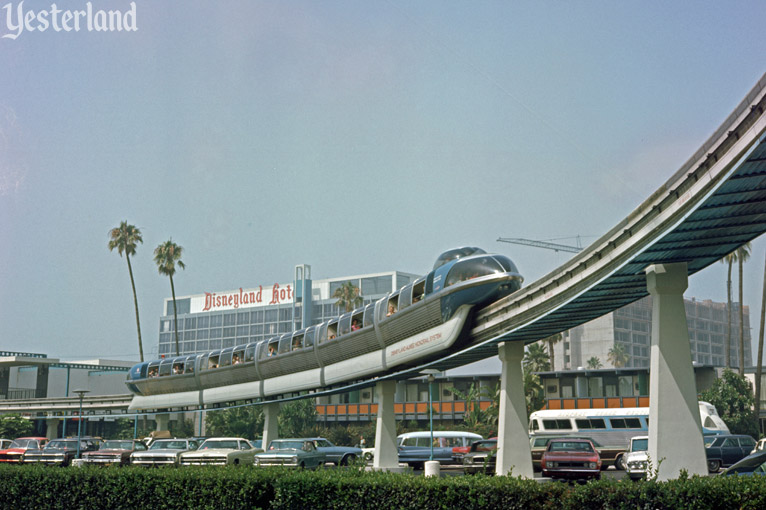
Photo, 1969, from the collection of Don Ballard New 5-car Mark III Monorail leaving the Disneyland Hotel |
|||
|
In 1968, the first of four all-new, five-car Mark III trains began service. The Alweg name remained on the Disneyland Monorails until 1976, although the actual ALWEG company had long ago faded away. |
|||
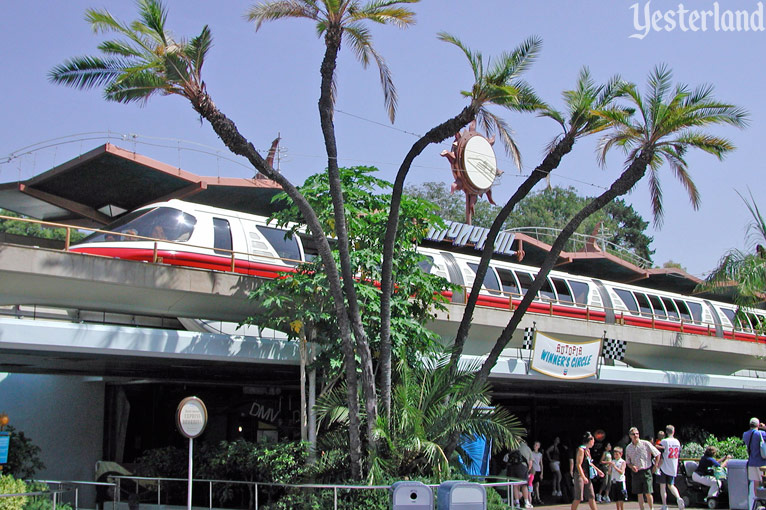
Photo by Werner Weiss, 2006 Mark V Monorail Red at the Tomorrowland Station in 2006 |
|||
|
The Mark V Monorails, which began operating in 1987, outwardly resembled the Walt Disney World Monorails. Despite their similar appearance, the Florida system uses much larger, heavier, longer trains, operating on more substantial beams. |
|||
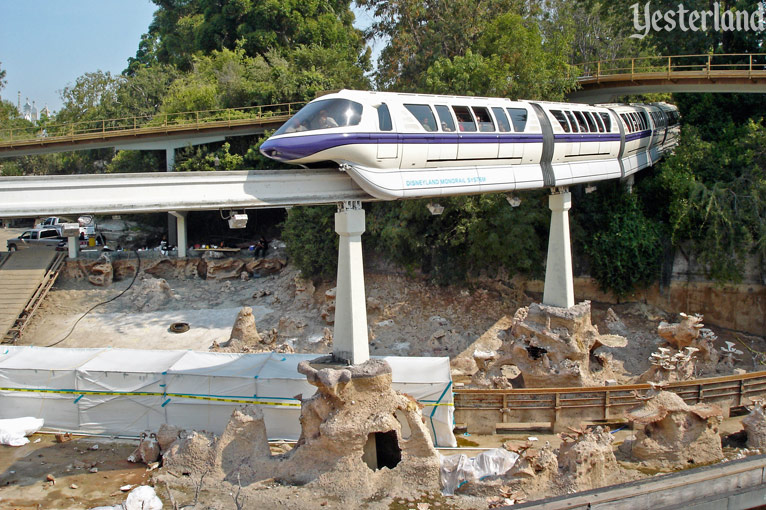
Photo by Allen Huffman, 2005 Monorail service continued while the lagoon was rebuilt for the Finding Nemo Submarine Voyage. |
|||
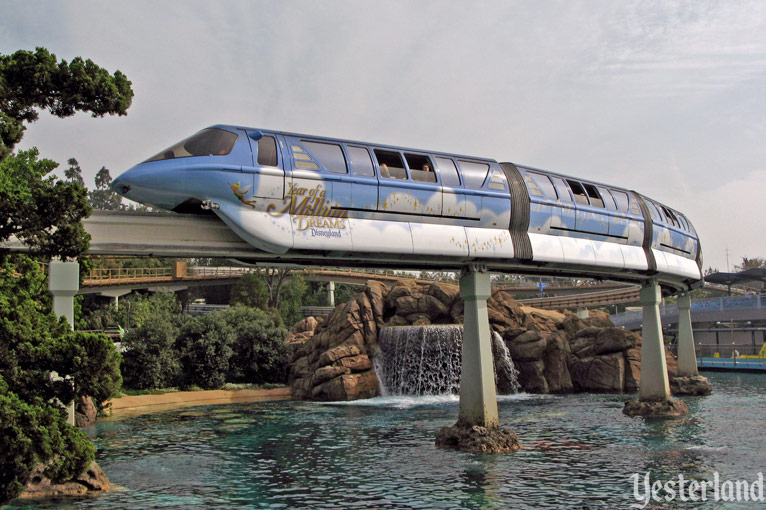
Photo by Werner Weiss, 2007 |
|||
|
The Mark V Monorails remained in service for over 20 years—with occasional promotional “wraps” on one train during the fleet’s final years. |
|||
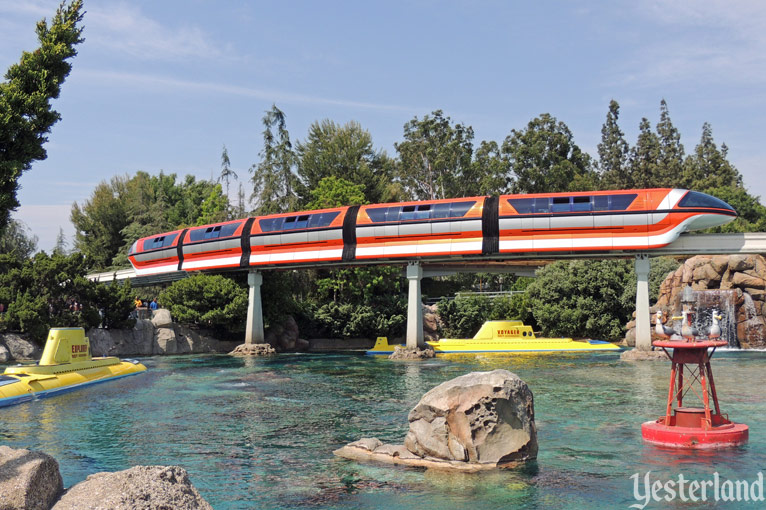
Photo by Werner Weiss, 2013 Mark VII Monorail Orange above the Submarine Lagoon |
|||
|
Disneyland now operates a fleet of three Mark VII Monorails. Monorail Red and Monorail Blue began service in 2008. They were joined by Monorail Orange in 2009. The Mark VII Disneyland Monorail trains don’t look like scaled-down Walt Disney World Monorail trains any more. The design is strongly influenced by Bob Gurr’s original, sleek Mark I trains, but without a bubble top—and without upside-down Cadillac fins either. |
|||
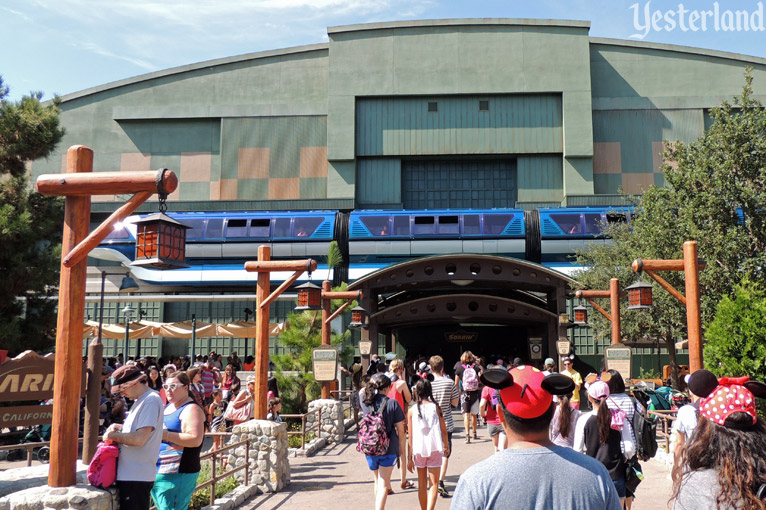
Photo by Werner Weiss, 2015 Soaring past Soarin’ |
|||
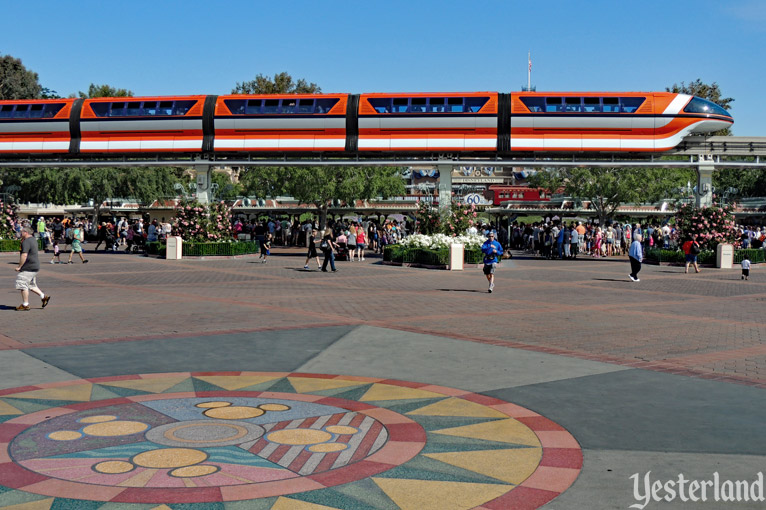
Photo by Werner Weiss, 2016 Monorail above the Disneyland Resort Esplanade |
|||
|
The Disneyland Monorail continues to entertain and transport Disneyland guests, but today’s trains, route, and views are very different than those of 1959. |
|||
|
|
Click here to post comments at MiceChat about this article.
© 1995-2018 Werner Weiss — Disclaimers, Copyright, and Trademarks Updated July 27, 2018. |
||
